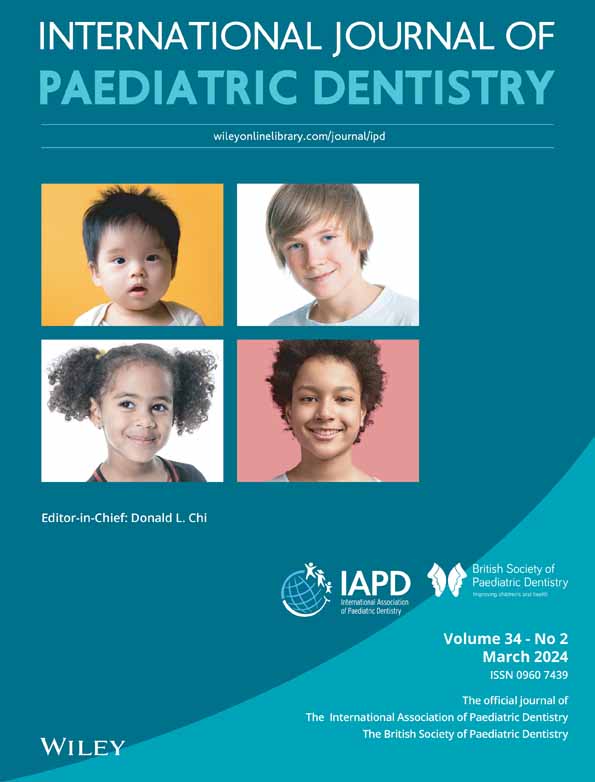Caregiver-reported dental manifestations in individuals with genetic neurodevelopmental disorders
Abstract
Background
Children with neurodevelopmental disorders (NDDs) often have poor oral health and dental abnormalities. An increasing number of genes have been associated with neurodevelopmental conditions affecting the oral cavity, but the specific dental features associated with many genes remain unknown.
Aim
To report the types and frequencies of dental manifestations in children with neurodevelopmental conditions of known genetic cause.
Design
A 30-question survey assesing ectodermal and dental features was administered through Simons Searchlight, with which formed a recontactable cohort of individuals with genetic NDDs often associated with autism spectrum disorder (ASD).
Results
Data were collected from a largely paediatric population with 620 affected individuals across 39 genetic conditions and 145 unaffected siblings without NDDs for comparison. Drooling, difficulty accessing dental care, late primary teeth eruption, abnormal primary and permanent teeth formation, misshapen nails, and hair loss were more frequent in individuals with NDDs. Additionally, we evidenced an association between three new pathogenic gene variant/oral manifestation pairs: CSNK2A1/unusual primary teeth, DYRK1A/late primary teeth eruption, and PPP2R5D/sialorrhea.
Conclusion
Our results demonstrate that genetic NDDs caused by mutations in CSNK2A1, DYRK1A, and PP2R5D are associated with unique dental manifestations, and knowledge of these features can be helpful to personalize dental care.
CONFLICT OF INTEREST STATEMENT
The authors declared no potential conflicts of interest with respect to the research, authorship, and/or publication of this article.
Open Research
DATA AVAILABILITY STATEMENT
The data that support the findings of this study are available from the corresponding author upon reasonable request.




